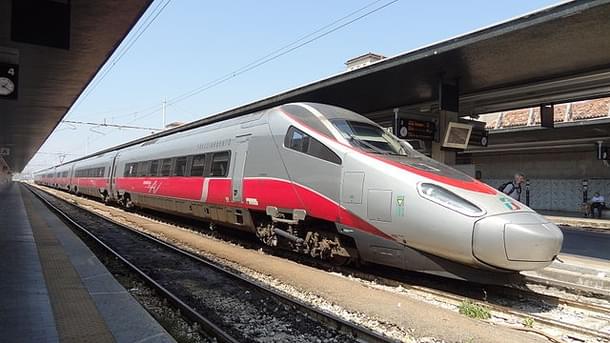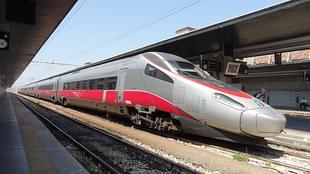Books
Not A Silver Bullet: Metro Should Have Got Priority Over High Speed Rail
Transport Niti
Dec 15, 2015, 07:26 PM | Updated Feb 12, 2016, 05:33 PM IST
Save & read from anywhere!
Bookmark stories for easy access on any device or the Swarajya app.


Metros rather than bullet trains would have been a better investment. All the claimed benefits through the bullet train project would have still accrued to us.
Bullets have been flying thick and fast on social media with people taking strong ‘for’ and ‘against’ positions on the proposed High Speed Rail between Mumbai and Ahmedabad. I feel it is important to get two important things straight before taking any stand on this high-profile project:
The Financing Scheme
This is not free money. Japan isn’t giving us a gift as is being misconstrued by a lot of people. Japan is offering us a Yen loan at 0.1 per cent interest which we will have to repay over several years. This is similar to an Apple store offering a 12-month, 0.1 per cent interest loan on iPhone 6S Plus. The iPhone 6S Plus is the best in its class and arguably could boost the buyer’s productivity like HSR. So why do a vast majority of people in India forego such an attractive low interest scheme? Well, because a) it is not free money and b) the marginal utility that an iPhone provides exceeds its cost. The proposed HSR is iPhone 6S Plus of trains, really cool with a great financing scheme but not a ‘must have’ for us at least at this point of time.
Feasibility Study
The Japan International Cooperation Agency (JICA) is the agency that prepared the feasibility report for the Ahmedabad-Mumbai line. JICA is also the agency that will appoint a Japanese firm to execute this project and this is what I find just a little discomforting. This is similar to asking an Apple dealer to tell you if you need an iPhone 6s Plus. I concede that the appointed Japanese firm will have Indian partners, but most of the loan money will go back to Japan because of riders such as the one that requires 30 per cent of rolling stock to be sourced from Japanese firms. Nothing wrong with that, it is in fact totally expected, but just something to be aware of when you weigh the benefits and costs of this seemingly great financing offer.
Coming back to the pros and cons, I noticed two specific arguments in favor of this project. The first one is a claim that this loan is tagged to the HSR project and is not a general purpose loan. Whilst it is true that the Rs 80,000 Crore (18,000 Crore is the value of land) loan is ring-fenced for the HSR project, to say that Japan wouldn’t have agreed to extend this loan for something else is a weak assumption because in November the same agency offered a Rs 5,500 Crore loan for the Ahmedabad and Chennai Metro projects.
Even the Delhi Metro was built using JICA loan. Japan is looking to help its industries like any country would and they wouldn’t have refused had we asked that this loan be diverted to build Metros in cities whose Metro projects are stuck for decades for lack of funds. In fact, during his Japan visit, PM Modi asked Japan’s support to build the Ahmedabad metro and got a positive response from PM Abe. There’s no real reason why Japan would’ve objected to funding several Metros in lieu of one HSR.
Tokyo has one of the best and busiest urban rail systems carrying close to 9 million people per day across a network that spans 300 Km with an enviable performance track. There’s a lot that Japan can offer in the urban rail space to train our engineers and managers if that is what we want to get out of the HSR project.
Further, any experience gained in the urban rail space is likely to be used more often than in the inter-city rail space, HSR or otherwise, simply because we’re going to need more Metros and Light Rails over the next several years compared to HSR. That brings us to the second argument which claims that the proposed HSR project will-
a) Trigger technological spin-offs.
b) Give a huge boost for PM Modi’s Make in India campaign. Rs 98,000 Crore can help us build roughly 500 Km of Metro rail or 1,000 Km of Light Rail in cities which are now being forced to look for short term fixes like Delhi’s license plate rationing scheme more popularly known as Even/Odd scheme.
To put things in perspective, the Delhi Metro spans 200 Km and I am yet to meet a Delhi resident who’d say that Delhi has good public transport. Our major cities are crumbling, so much so that people don’t mind hanging a good foot or two outside Mumbai local just to get to work.
Under such fatal capacity shortages within our financial capital, it seems we’ve got priorities all mixed up. Technological spin-offs and Make in India would have benefitted from Metro projects too. If anything, building 500 km of Metro would arguably give a bigger impetus to Make in India both directly through manufacturing of Metro coaches and ancillaries for domestic and international consumption, and indirectly by improving the living standards of Mumbaikars or for residents of other major cities.
While HSR is expected to become operational by 2023, Metro projects have a much shorter turn-around time and had we chosen Metro rail over HSR, PM Modi would’ve had several trophies to show when he seeks reelection in three years’ time. By trophies I don’t mean a 10 km Metro line in Vizag. I mean a 500 Km Metro network spanning across Mumbai. I know it is easier said than done, but so is HSR.
I also wonder why Ahmedabad-Mumbai?
Is that corridor experiencing bottlenecks because HSR is usually considered when airports experience congestion like LA-SF, or NYC-DC. Mumbai-Ahmedabad or even Mumbai-Delhi come nowhere near their American counterparts. Even if the Mumbai-Ahmedabad corridor is congested, is that congestion more severe than the bottlenecks one experiences within Mumbai, Bangalore, Pune, Hyderabad, Chennai, Delhi and Ahmedabad?
As an aspiring smart nation, we must look to get the best returns on our investments and that requires listing our critical needs and finding solutions for them. What seems to have happened in this case is that we found a shiny object and are now trying to fit it into our list. I made this point in my piece on Amaravathi’s Smart City project too and I’d like to reiterate it because it also applies to HSR:
The market is now full of several shiny objects, and vendors are going full steam to sell their ‘smart products’, each one trying to market their product as the backbone of any smart city. CM Chandrababu Naidu is a dynamic and smart (pun not intended) leader, I am sure that the investments he makes and the ‘smart’ products he buys from vendors will be need-based. I am sure he’ll be able to differentiate between white elephants and work horses because smart cities mustn’t make dumb investments.
An earlier version of this copy had said that the Japanese loan mentioned above was at 0.5 per cent interest while factually it is 0.1 per cent. The error is regretted.





